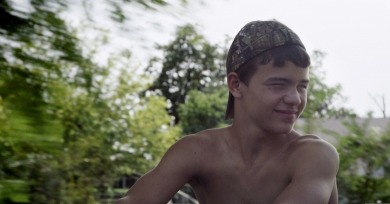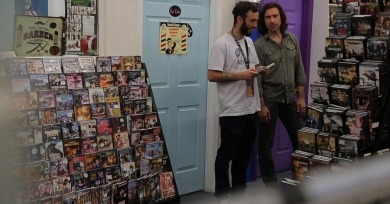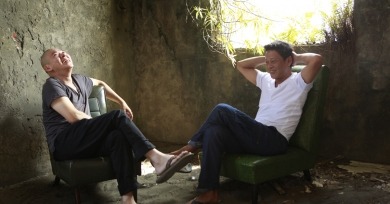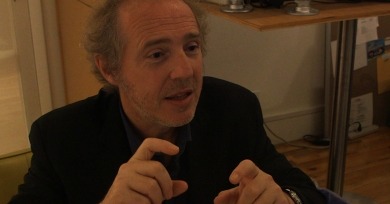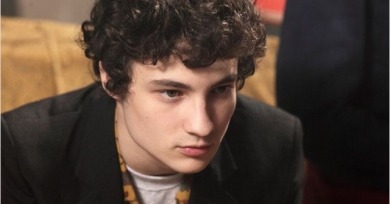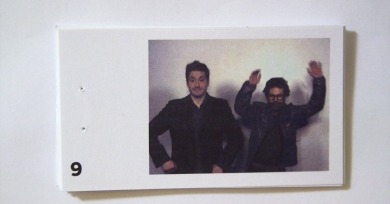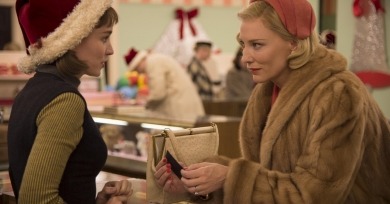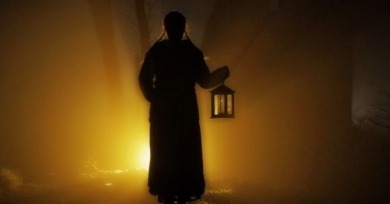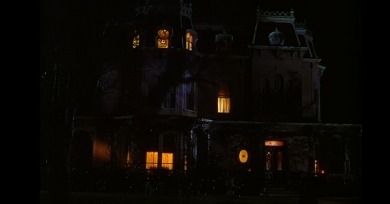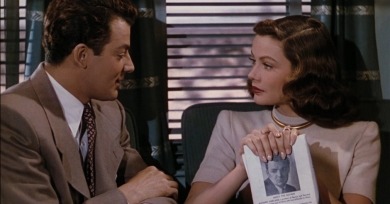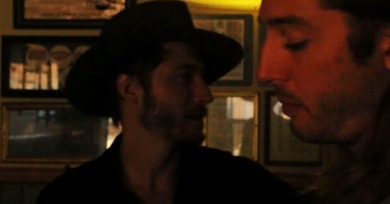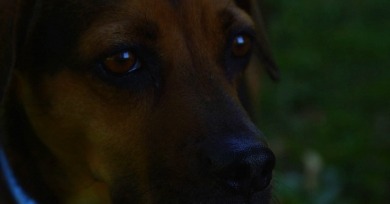Jeff Reichert
What are the implications in arguing that a work imagined by an artist, then scripted and performed before a camera, bears more of those markers we associate with reality than another filmed in a real town that tells the stories of people who actually exist?
Why are we suddenly so obsessed with questioning cinematic reality? Why “docs”? And why now? To get at these queries, and try to get a handle on the nonfiction boom, we figured we’d do it the best way we know how: with a new symposium.
In this Reverse Shot Talkie, director Joe Frank and host Eric Hynes browse the aisles of R.A.O. Video in Little Rock, Arkansas, to discuss the unique origins and process for his debut film, Sweaty Betty.
The force of the film’s spare simplicity here reminds of the similarly devastating No Home Movie—artists of the caliber of Tsai or Chantal Akerman need no tricks to move an audience, only honesty and fearlessness.
In this Reverse Shot Talkie, French filmmaker Arnaud Desplechin sits down with host Eric Hynes to talk about his distinctive, full-bodied way of directing, and how it applied to his new film, My Golden Days.
First love is always critical, especially in the movies, but few are the scenarists like Desplechin who plumb it deeply enough to truly turn over all the minute pleasures and pains to find how thoroughly they shape a person.
What if we could see what is actually on the other side of the world from where we sit? . . . Russian documentary filmmaker Victor Kossakovsky approaches these questions with a mixture of the digging child’s ingenuousness and the dogged explorer’s rigor and sense of purpose.
His cinema is now one where only simple glances or gestures are necessary to convey multitudes. This kind of description has been applied to many filmmakers, but few directors are as pinpoint accurate as Garrel.
Kaufman and Johnson tour the galleries of the Museum of the Moving Image with host Eric Hynes. They contemplate early cinematic techniques of motion capture and ponder whether the puppets in their stop-motion animation drama Anomalisa might have been "faking it" on set.
The Good Dinosaur, like so many animated films, concerns a journey of self-actualization, but it’s also a classic prairie western. The central dinosaur family are reptilian cousins to the homesteaders who might have settled in Oklahoma and lived in hardscrabble isolation in the mid-nineteenth century.
It’s often said that certain films look as if they were advertisements for joining the U.S. Military, but a handful might be said to actually draw their images from them.
It’s a film that luxuriates in details, in textures, and specificity of places and costumes, and the particulars of Carol and Therese’s sexuality are absolutely crucial, yet also not the endpoint. What is it they say about finding the universal in the specific?
A Few Great Pumpkins
The Witch, The Hound of the Baskervilles, In the Mouth of Madness/Hair, Ringu, The Visit, Nosferatu the Vampyre, Carrie
Halloween is our most cinematic holiday; for a few hours in the dark, it turns our everyday world into a surreal, upside-down place. In this short film we go trick or treating with some of the Halloweens that have haunted our collective movie dreams.
The Pearl Button functions in a similar mode to Nostalgia for the Light—the filmmaker deploys a series of elements that are unconnected on the surface, using his voiceover musings and taking liberal advantage of the power of metaphor to tie all of his varying strands together.
We decided to embark on this symposium as a way of acknowledging film as a collaborative medium, yes, but also to underline how precarious our conception of film as an “authored” form really is.
Like Lincoln, Bridge places value on conversation, negotiation, honor, decency, the ineffable power of giving one’s “word” to another. Spielberg aims to please, yes, but in the one-two punch that is Lincoln and Bridge of Spies, he’s also aiming for something grander.
As Mizuki makes herself a small batch of pastries, each filled with gooey black sesame paste, the camera elegantly tilts away, revealing the space over her shoulder and above her head; it’s a movement implying omniscience and that something, perhaps of the malevolent variety, might lurk just out of our view.
Eric Hynes shoots pool and talks shop with Bill and Turner Ross in Columbia, Missouri, where the Ross's Western screened at the 2015 True/False Film Fest.
The ghosts of summers past haunt 2015 in this action-packed, star-studded new Reverse Shot Movie by Jeff Reichert and Michael Koresky.
